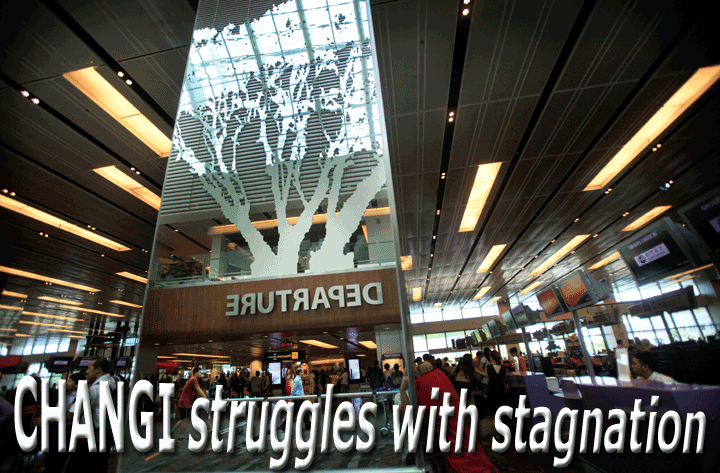
 ingapore
Changi Airport has again extended a range of financial incentives
as part of its decade long drive to try and boost its cargo throughput
and hold on to its existing business. ingapore
Changi Airport has again extended a range of financial incentives
as part of its decade long drive to try and boost its cargo throughput
and hold on to its existing business.
Fire Sale Rebates
Under the Changi Airport Growth Initiative
for the financial year ending March 31, 2015, all scheduled freighter
flights using Singapore will be eligible for a 50 percent landing
fee rebate.
Cargo tenants leasing CAG cargo facilities at the Changi Airfreight
Centre will also enjoy rebates, in this case based on cargo tonnage
handled and worth up to 20 percent of their rentals.
“Together with other growth
incentives available to freighter airlines, CAG’s support
package for the cargo industry will amount to S$18 million for FY14/15,”
said a CAG statement.
The package follows similar rebates offered in FY2012/13 and FY
2013/14 to freighter service providers and cargo tenants.
When Awards
Are Not Enough
The strategy is part of CAG’s
acknowledgement that as one of the world’s major business
centers, and as the Asian headquarters of many leading 3PLs and
logistics giants, Singapore needs to maintain—and, indeed,
expand—its role as a cargo hub, and not simply concentrate
on consolidating its position as the globe’s most passenger-friendly
airport, a view reflected in the plethora of awards received by
Changi in 2013.
Cargo Stalls
As Costs Rise
Although one of Asia’s biggest
hubs, with passenger numbers of 53.7 million last year, Changi’s
cargo fortunes have stalled for much of the last decade as it has
tried to cope with higher land and/or labor costs than regional
rivals such as Hong Kong, Kuala Lumpur, and Bangkok, as well as
the declining competitiveness of its domestic manufacturing sector,
which used to drive export growth.
Lags Behind
Hong Kong Incheon & Tokyo
In 2012, Changi was the world’s
12th busiest cargo airport and the fifth largest in Asia after Hong
Kong, Shanghai, Incheon, and Tokyo, according to figures from ACI.
But volumes have barely increased in a decade.
Final year figures for 2013 released
this week revealed marginal 0.8 percent year-on-year growth, taking
total throughput to 1.85 million tons, which could see Changi lose
a place to Beijing in the rankings of Asia’s biggest cargo
airports by throughput.
Missed The Boom
Indeed, as long ago as 2004 the airport’s
freight throughput totaled 1.78 million tons, only marginally less
than is currently handled. In short, unlike Singapore’s booming
maritime terminals, which have grown exponentially, Changi has missed
out on much of the boom in intra-Asia and global trade over the
last decade as globalization has seen the length and complexity
of supply chains increase exponentially.
CAG said its 2013 cargo highlights
included perishables and pharma growth but overall, slower export
and transshipment volumes were only just outweighed by stronger
imports.
Looking forward to 2014, CAG is far
more downbeat than most others in Asia’s air cargo sector,
as FlyingTypers has reported. While major airlines, airports and
handlers are expecting improved conditions this year, following
on from a healthy end to 2013 and the better outlook in European
and U.S. consumer markets, CAG takes a rather different view.
“The recovery of the global
airfreight industry remains fragile and potential growth in cargo
volumes, if any, will be amidst a challenging environment as global
consumer demand and cargo yields continue to remain depressed,”
said a statement.
Where Do We Go From Here?
The real question as airports and
airlines in Asia gear up for higher volumes in 2014 is whether Changi
will be able to secure a sizeable share of improving cargo markets;
or whether throughput will continue to stagnate as it has for the
last ten years, irrespective of wider market conditions.
SkyKing
|



